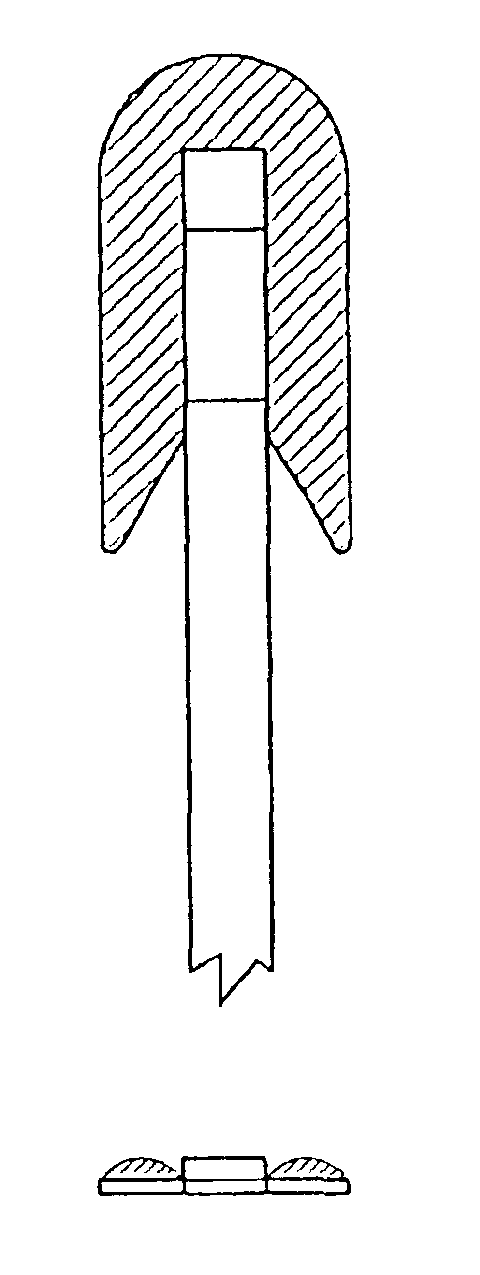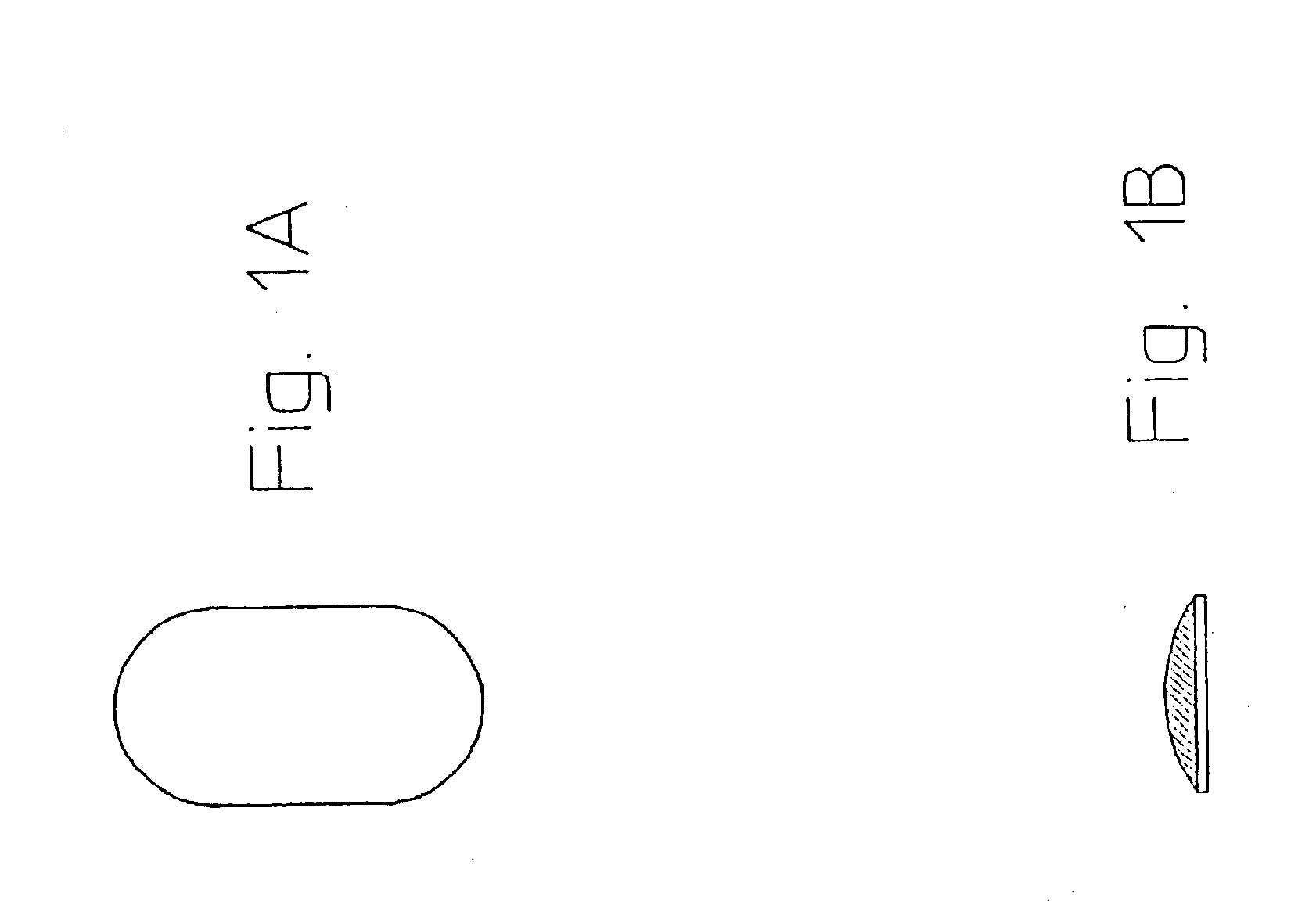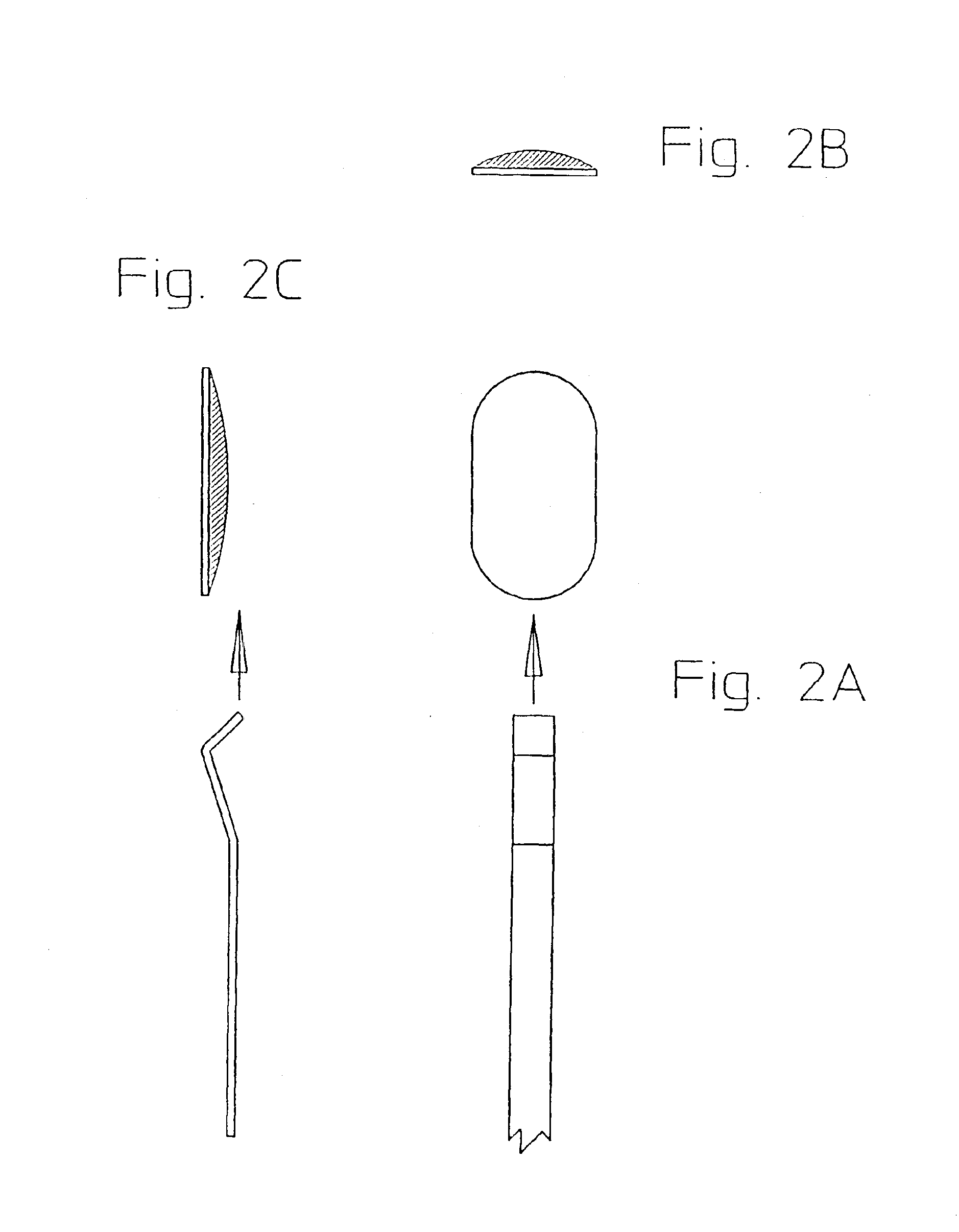Method and apparatus for printed circuit board pads with registering feature for component leads
a printed circuit board and component lead technology, applied in the direction of electrical apparatus construction details, sustainable manufacturing/processing, final product manufacturing, etc., can solve the problems of insufficient adhesive power, limited flexibility in the order of soldering operations, and dislocation of some components, so as to achieve the effect of hardening the solder mound
- Summary
- Abstract
- Description
- Claims
- Application Information
AI Technical Summary
Benefits of technology
Problems solved by technology
Method used
Image
Examples
Embodiment Construction
FIGS. 1A, 1B, 2A-C, and 3A-C show various views of solder pad research investigations. In an assembly process, solder paste is placed onto the pads and is melted or “reflowed” into a molten state. A wetting effect spreads the molten solder out to pad edges so as to cover a respective surface of each pad. A surface tension effect causes the molten solder to form a respective solder mound covering each pad, for example as shown in plan view and cross sectional view in FIGS. 1A and 1B. The solder mound is allowed to cool and harden. After component placement on top of the solder mounds, heat is applied to reflow the solder, so as to solder the component leads to the pads.
Leads of each surface mount component are placed onto the tops respective solder mounds of the pads using a combination of motions. In some cases, components are set down onto the board and then pushed laterally using sliding motions across the surface of the board, until leads of each component are in correct lateral ...
PUM
| Property | Measurement | Unit |
|---|---|---|
| flare angle | aaaaa | aaaaa |
| flare angle | aaaaa | aaaaa |
| flare angle | aaaaa | aaaaa |
Abstract
Description
Claims
Application Information
 Login to View More
Login to View More - R&D
- Intellectual Property
- Life Sciences
- Materials
- Tech Scout
- Unparalleled Data Quality
- Higher Quality Content
- 60% Fewer Hallucinations
Browse by: Latest US Patents, China's latest patents, Technical Efficacy Thesaurus, Application Domain, Technology Topic, Popular Technical Reports.
© 2025 PatSnap. All rights reserved.Legal|Privacy policy|Modern Slavery Act Transparency Statement|Sitemap|About US| Contact US: help@patsnap.com



